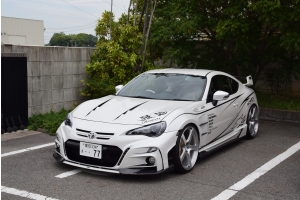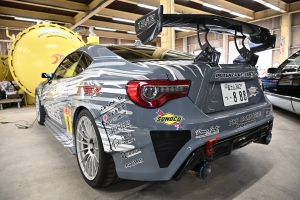Excessive Japan Import Duties? Here's Your Fix (USA ONLY)

You happily ordered your dream JDM parts, waited weeks (or months) for it to arrive to receive a customs invoice that rivals your monthly car payment can feel like getting gapped by a stock Civic at a red light—unexpected, embarrassing, and financially painful. If you've recently experienced this wallet-lightening phenomenon, welcome to the club nobody wants to join.
Please note: This information specifically applies to shipments from Japan to the United States via major carriers including UPS, DHL, and FedEx.
The Fundamental Shift in U.S. Import Regulations (Or: Why Your Voltex Wing Now Costs More Than Your First Car)
The United States eliminated its de minimis exemption for all countries on August 29, 2025, fundamentally transforming how we acquire those sweet JDM goodies. Previously duty-free shipments valued under $800 are now subject to comprehensive tariffs and fees.
Understanding HS Codes: The Difference Between "Race Car Parts" and "Expensive Disappointment"
The Harmonized System (HS) code serves as customs' way of categorizing your impulse purchases—a standardized 6 to 10-digit identifier that determines whether your carbon fiber hood gets taxed as an "automotive component" or "aerospace material". While conceptually straightforward, proper implementation proves considerably more complex.
HS Code Architecture
These classification codes consist of 6-10 digits that customs authorities utilize to categorize merchandise and assess appropriate duties. Every international shipment requires accurate classification, and errors can result in costs that'll make you consider refinancing your home.
The code structure follows this hierarchy:
- First 2 digits: Chapter
- Next 2 digits: Heading
- Following 2 digits: Subheading (the rabbit hole deepens)
- Remaining digits: Country-specific details (because why make it simple?)
Consider your latest purchase might get classified as "automotive body components" or "raw plastic sheets" the difference being whether you're eating ramen for a month or three months. A single digit error can trigger luxury goods taxation.
Artificial Intelligence in Customs Processing: When Skynet Meets Your Shipment
Customs authorities increasingly employ AI-powered classification systems to process shipments, achieving accuracy rates exceeding 85% in tariff assignments. While impressive, if you're in that unlucky 15%, your Cusco strut bar might get classified as "gym equipment," and suddenly you're explaining to customs why your "exercise bar" has mounting brackets for a Subaru BRZ.
Common AI Classification Errors (Or: How Your Parts Get Lost in Translation)
The acceleration toward automated customs processing has introduced several challenges :
- Insufficient Product Specifications: Your seller writes "car part goods" and the AI assumes you're importing OEM fenders. Meanwhile, it's just valve stem caps with Japanese characters"
- Material Specification Ambiguity: That "racing seat" could be fabric, leather, or woven from unicorn hair blessed by Keiichi Tsuchiya himself—each carrying wildly different tariff implications (we don’t know about the last one though).
- Translation Inaccuracies: Japanese product descriptions processed through automated translation can turn your "limited slip differential" into a pharmaceutical product, confusing both AI and humans alike.
- Outdated Classification Databases: While HS codes get updated every five years with minimal changes, AI systems may still put the old ones.
- Currency Conversion Errors: Yen-denominated values occasionally undergo incorrect conversion, transforming your ¥10,000 (~$70) shift knob into a $10,000 declaration. Suddenly, customs thinks you're importing a shift knob made from compressed diamonds and gold.
The consequence: Classification errors can result in duties higher than your car's monthly payment, generating penalties that'll make you question why you didn't just buy a Miata like everyone suggested.
Strategic Solutions: Three Approaches to Resolve Excessive Charges
Begin by obtaining your Entry Summary documentation from customs authorities; it’s basically the “invoice” of your duty fees. This document is usually not given to you directly from the shipping company who bills you, so request it from your vendor, though acquisition may require the patience and will from the person who shipped the parts to you.
Solution 1: Request HS Code Correction Through Your Vendor
If classification appears incorrect (your Tomei exhaust isn't "musical instruments and parts thereof"):
- Contact your seller immediately
- Request comprehensive review of the assigned HS code
- Provide detailed product specifications beyond "make car go brap brap"
Professional recommendation: Replace generic terms like "car part" with specific descriptions: "forged aluminum lower control arms, adjustable, specifically designed for 2022+ Toyota GR86."
Estimated resolution timeframe: 3-8+ weeks
Solution 2: Contest Product Description Discrepancies
When your Varis front lip gets classified as "dentist chair":
- Verify customs-submitted descriptions with your vendor
- Request formal dispute through shipping carrier (prepare for hold times longer than DMV)
- Document actual products with photos
This proves particularly critical when your track-focused Acre brake pads get classified as "industrial friction material".
Estimated resolution timeframe: 3-8+ weeks
Solution 3: Shop with 86WORX for an all-inclusive pricing
Look, we get it. Navigating customs complexities is about as enjoyable as explaining to your significant other why you need a fourth set of wheels when "the car came with perfectly good ones." At 86WORX, we've established comprehensive import solutions because we're enthusiasts too, and we hate complicated things.
Shopping with us includes:
- Duties, taxes and tariffs are prepaid (no extra bill from that friendly UPS guy)
- Complete assumption of customs risks—we deal with the paperwork so you can focus on important things, like forum arguments about oil weights
- Professional HS code classification by people with years of experience
- Established carrier relationships
With extensive expertise in the Toyota 86/GR86, Scion FR-S, and Subaru BRZ platforms, we understand your needs. We know you're not just buying parts; you're investing in the eternal quest to make your car the best it can be. We've been selling parts for these chassis since 2012, we’re here to stay!
Whether you're chasing that perfect OEM+ look, building a time attack monster, or just trying to make your daily driver handle better, we ensure your project proceeds without customs-related interruptions or financial surprises that require selling a kidney.
Resolution timeframe: Immediate, just enjoy the ride!
Conclusion: Welcome to the new normal
The elimination of de minimis exemptions has created unprecedented complexity in international shipping. Combined with AI classification challenges, processing backlogs longer than Cars and Coffee exit lines, and regulations changing faster than your tire wear at your first track day, unexpected customs charges have become as common as "I'm keeping it stock" lies.
However, these challenges are not insurmountable. Whether through vendor collaboration for classification corrections (patience required), formal dispute processes (more patience required), or ordering with specialized importers like 86WORX who manage all customs complexities (no patience required—just add to cart), effective solutions exist.
Success requires not avoiding customs challenges, but implementing proper strategies to address them efficiently—or partnering with experts who eliminate these concerns entirely, leaving you free to focus on the important questions, like whether those new wheels need a +35 or +30 offset.
Remember: Life's too short to argue with customs about whether your Bride seat is furniture or automotive equipment. Let us handle the boring stuff while you handle the fun part—actually driving your car.









Please complete your information below to login.
Sign In
Create New Account